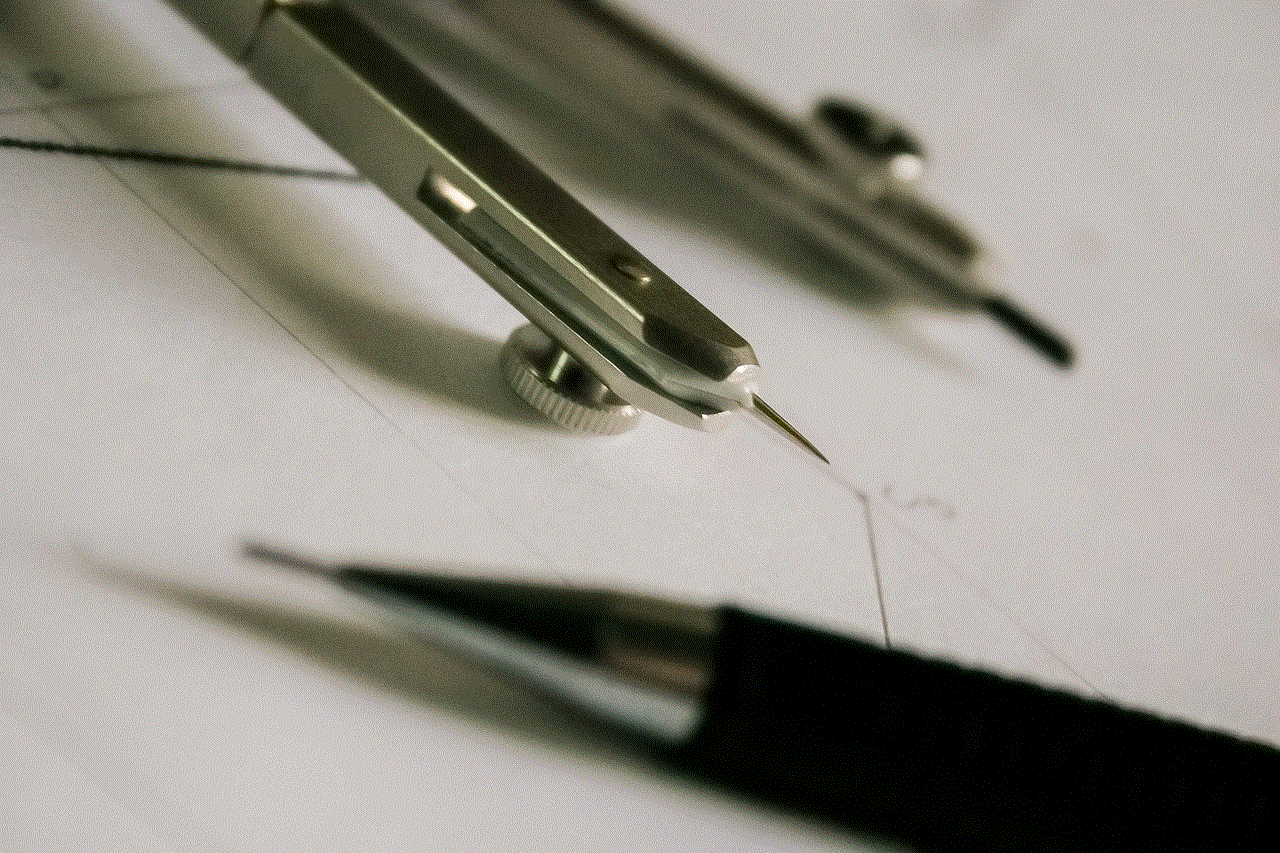how to track someone’s iphone without icloud
Title: How to track someone ‘s iPhone Without iCloud: A Comprehensive Guide
Introduction (approx. 150 words)
Tracking someone’s iPhone without iCloud might seem like a daunting task, but it is indeed possible. Whether you want to locate a lost iPhone, keep an eye on your child’s device, or monitor an employee’s activities, there are various methods available that do not require iCloud. In this article, we will explore different techniques and applications that can help you track an iPhone without relying on iCloud’s location services.
1. Using Find My iPhone Alternative (approx. 200 words)
One of the most reliable ways to track an iPhone without iCloud is by using an alternative to Apple’s Find My iPhone feature. Several third-party applications, such as Find My Device and Find My Friends, offer similar functionalities and can be used to track an iPhone’s location. These apps usually require installation on both the tracker’s and the target iPhone and allow you to monitor the device’s whereabouts remotely.
2. GPS Tracking Devices (approx. 200 words)
Another effective method to track someone’s iPhone without iCloud is by using a GPS tracking device. These devices are small and discreet and can be easily attached to the target iPhone or placed nearby. By connecting to the device through a dedicated mobile app or website, you can track the iPhone’s real-time location, as well as monitor its movement history.
3. Spy Applications (approx. 250 words)
Spy applications, also known as spyware or tracking apps, offer comprehensive monitoring capabilities for iPhones without the need for iCloud. These apps can be installed on the target iPhone, providing you with access to the device’s location, call logs, text messages, social media activities, and more. Some popular spy applications include mSpy, FlexiSPY, and Spyzie. It is important to note that the installation of spyware on someone’s iPhone without their consent may violate privacy laws, so it is crucial to ensure that you have legal authority or consent before using such applications.
4. Cellular Service Provider Tracking (approx. 250 words)
Most cellular service providers offer location tracking services for iPhones, regardless of whether iCloud is enabled or not. By contacting your service provider and explaining the situation, they might be able to assist you in tracking the iPhone’s location using their network infrastructure. However, be aware that this method usually requires a valid reason, such as a stolen or lost device, and may involve legal procedures.
5. Wi-Fi Router Logs (approx. 200 words)
If you have access to the Wi-Fi router used by the iPhone you want to track, you can potentially obtain valuable information from the router logs. Some routers log the MAC addresses of connected devices, including iPhones. By analyzing these logs, you can identify the MAC address of the target iPhone and track its movements within the range of the Wi-Fi network.
6. Social Engineering (approx. 200 words)
Social engineering techniques can also be employed to track someone’s iPhone without iCloud. By manipulating the target individual, you may be able to gain access to their iPhone and install a tracking application or configure location sharing settings without their knowledge. However, it is crucial to note that social engineering is unethical and may have legal consequences, so it should only be used in extreme cases and with proper authorization.
7. Private Investigator Services (approx. 200 words)
If you require professional assistance in tracking someone’s iPhone without iCloud, hiring a private investigator is an option worth considering. These professionals have expertise in surveillance and tracking techniques and can legally help you locate an iPhone without relying on iCloud. However, it is important to choose a reputable and licensed investigator to ensure ethical and lawful practices.
Conclusion (approx. 150 words)
Tracking an iPhone without iCloud is indeed possible, thanks to various techniques and applications available. From using alternative tracking apps to employing GPS tracking devices, spy applications, or seeking assistance from cellular service providers or private investigators, the methods discussed in this article offer different options based on your specific needs. However, it is crucial to remember that privacy and legal considerations should always be taken into account when tracking someone’s iPhone, and obtaining proper consent or authorization is essential to avoid any legal consequences.
youtube my search history
YouTube has become one of the most popular platforms for entertainment, education, and information. With millions of videos being uploaded every day, it is no surprise that people spend hours browsing and watching videos on this platform. However, have you ever wondered what your search history on YouTube looks like? In this article, we will explore the concept of search history on YouTube and how it can be accessed.
What is YouTube Search History?
YouTube search history is a record of all the videos that you have searched for on the platform. It is similar to the search history on your web browser, where all the websites you have visited are stored. YouTube search history keeps track of the videos you have searched for, watched, and clicked on. This feature is available for all users with a YouTube account, and it is automatically enabled.
How to Access YouTube Search History?
To access your YouTube search history, you need to have a YouTube account. If you do not have one, you can easily create one by signing up for a Google account. Once you have a YouTube account, follow these simple steps to access your search history:
1. Open the YouTube app or website on your device.
2. Click on the three horizontal lines on the top left corner of the screen.
3. Scroll down and click on “History.”
4. Your YouTube search history will be displayed, showing the most recent searches first.
On the YouTube app, you can also access your search history by clicking on the “Library” tab at the bottom of the screen and then selecting “History.”
Why is YouTube Search History Important?
YouTube search history is important for several reasons. Firstly, it allows you to easily find the videos that you have previously searched for. This can be helpful if you want to re-watch a video or share it with someone else. Secondly, it helps improve your YouTube experience by showing you recommended videos based on your search history. YouTube’s algorithm uses your search history to suggest videos that you may be interested in. This can help you discover new content that you might have otherwise missed.
Moreover, YouTube search history can also act as a record of your interests and preferences. By looking at your search history, you can get an idea of the type of content you have been consuming on the platform. This can be useful for self-reflection or understanding your online behavior.
How to Clear YouTube Search History?
If you do not want your YouTube search history to be stored, you have the option to clear it. Here’s how you can do it:
1. Go to your YouTube search history as mentioned earlier.
2. On the top right corner, click on “Clear all watch history.”
3. A pop-up window will appear asking you to confirm the action. Click on “Clear watch history.”
4. Your entire YouTube search history will be deleted.
You can also choose to clear your search history for a specific time period by selecting the “Clear all search history” option. This will delete all your searches made during that particular time frame.
In addition, you also have the option to pause your YouTube search history. This will prevent YouTube from storing any future searches until you turn the feature back on.
What Happens When You Delete Your YouTube Search History?
When you delete your YouTube search history, the videos you have searched for and watched will no longer be visible in your search history. However, this does not mean that the videos are deleted from YouTube altogether. They will still be available on the platform and can be searched for again.
Deleting your search history also does not affect your recommended videos. YouTube’s algorithm will continue to suggest videos based on your watch history and activity on the platform.
Moreover, if you have watched a video but did not search for it, it will not be deleted from your history. This is because YouTube only stores the videos that you have actively searched for.
Can You See Someone Else’s YouTube Search History?
No, you cannot see someone else’s YouTube search history unless you have access to their account. Even if you have access, you can only view their search history if they have not deleted it. YouTube’s privacy policy states that they do not share users’ search history with anyone.
However, if you have a shared device or are using someone else’s computer , their YouTube search history may appear in your search history if you are signed in to your account. You can easily delete their search history by following the steps mentioned earlier.
YouTube Search History and Privacy Concerns
While YouTube search history has its benefits, it can also raise privacy concerns for some users. Many people are not comfortable with the idea of their search history being tracked and stored. This is especially true for those who watch videos on sensitive or personal topics.



To address these concerns, YouTube has introduced the option to pause your search history. This allows users to control what videos are being stored in their search history. Moreover, you also have the option to delete your search history at any time, as discussed earlier.
Conclusion
YouTube search history is a useful feature that allows you to easily find the videos you have searched for and improves your overall experience on the platform. It also acts as a record of your interests and preferences. However, if you are not comfortable with this feature, you have the option to delete or pause your search history. YouTube ensures that users’ search history is private and not shared with anyone. So, you can enjoy watching your favorite videos on the platform without worrying about your search history being accessed by others.
how to reset screen time on iphone
Screen time has become a buzzword in recent years, as the use of smartphones and other devices has become more prevalent in our daily lives. With the rise of social media and streaming services, it’s easy to spend hours upon hours mindlessly scrolling through our devices. This has led to concerns about the impact of excessive screen time on our mental and physical health, especially for young people. In response to these concerns, Apple introduced a feature called Screen Time on its iPhones, which allows users to track and limit their usage. But what if you want to start fresh and reset your screen time on your iPhone? In this article, we will explore how to reset screen time on iPhone and why it’s important to monitor and manage our screen time.
Before we dive into the steps of resetting screen time on iPhone, let’s first understand what it is and why it’s necessary. Screen Time is a feature introduced by Apple in iOS 12, which provides users with detailed insights into their device usage. It shows you how much time you spend on your device, which apps you use the most, and how many notifications you receive. It also allows you to set limits for specific apps or categories of apps, such as social media or games. This feature was designed to help users be more mindful of their device usage and make changes to improve their overall well-being.
Now, you may be wondering why it’s necessary to reset screen time on iPhone. After all, isn’t it a good thing to track our device usage and set limits? While Screen Time can be a helpful tool, it’s not a perfect solution. For one, it relies on users to be honest about their usage, which may not always be the case. Additionally, there have been reports of bugs in the feature, which can result in inaccurate data. Furthermore, sometimes we may need a fresh start and want to reset our screen time data to get a better understanding of our current usage patterns. And finally, if you share your device with others, you may want to reset screen time to start from scratch and set new limits for everyone using the device.
So, how can you reset screen time on your iPhone? The process is straightforward, and there are a few different ways to do it. Let’s take a look at each method.
Method 1: Reset Screen Time through Settings
The first method to reset screen time on your iPhone is through the Settings app. Here’s how to do it:
Step 1: Open the Settings app on your iPhone.
Step 2: Scroll down and tap on “Screen Time.”
Step 3: Tap on “See All Activity” under the “Screen Time” section.
Step 4: Scroll to the bottom and tap on “Clear All Usage Data.”
Step 5: A pop-up will appear, asking you to confirm your decision. Tap on “Clear All Usage Data” again.
And that’s it! Your screen time data will be reset, and you will start from scratch.
Method 2: Reset Screen Time through Screen Time Passcode
If you have set up a Screen Time Passcode on your device, you can also reset screen time through that. Here’s how:
Step 1: Open the Settings app on your iPhone.
Step 2: Tap on “Screen Time.”
Step 3: Scroll down and tap on “Change Screen Time Passcode.”
Step 4: Enter your current Screen Time Passcode.



Step 5: Tap on “Forgot Passcode?”
Step 6: You will be prompted to enter your Apple ID and password to reset your Screen Time Passcode.
Step 7: After resetting your Screen Time Passcode, you will be asked if you want to reset your screen time data. Tap on “Reset Screen Time.”
Method 3: Reset Screen Time through Restrictions Passcode
If you have an older iPhone with iOS 11 or earlier, you may have set up a Restrictions Passcode instead of a Screen Time Passcode. In this case, you can reset screen time through the Restrictions Passcode. Here’s how:
Step 1: Open the Settings app on your iPhone.
Step 2: Tap on “General.”
Step 3: Scroll down and tap on “Restrictions.”
Step 4: Enter your Restrictions Passcode.
Step 5: Tap on “Reset Restrictions Passcode.”
Step 6: You will be prompted to enter your Apple ID and password to reset your Restrictions Passcode.
Step 7: After resetting your Restrictions Passcode, you will be asked if you want to reset your screen time data. Tap on “Reset Screen Time.”
Now that you know how to reset screen time on your iPhone let’s talk about some tips for managing your screen time effectively.
1. Set Goals: Before you start using Screen Time, it’s essential to set realistic goals for yourself. Think about how much time you want to spend on your device and which apps you want to limit. This will help you stay focused and motivated to adhere to your limits.
2. Customize Limits: Screen Time allows you to set limits for specific apps or categories of apps. Take advantage of this feature and tailor your limits to your needs. For example, if you want to spend less time on social media, you can set a limit for all social media apps.
3. Use Downtime: Downtime is a feature in Screen Time that allows you to schedule a time when certain apps will be blocked. This can be helpful if you want to limit your device usage during specific hours, such as before bedtime.
4. Take Breaks: It’s essential to take breaks from your device throughout the day. This will not only help reduce your screen time but also give your eyes and mind a rest.
5. Use App Limits: App limits allow you to set a time limit for specific apps. Once you reach the limit, the app will be blocked for the rest of the day. This can be a helpful tool to prevent mindless scrolling and encourage more intentional usage.
6. Enable Content & Privacy Restrictions: Screen Time also has a feature called Content & Privacy Restrictions, which allows you to manage what content and features are available on your device. This can be useful if you want to block certain websites or restrict access to certain apps.
7. Monitor Usage Regularly: It’s crucial to check your Screen Time data regularly to see if you’re staying within your set limits. If you find yourself consistently going over your limits, it may be time to reevaluate and make adjustments.
8. Be Mindful: Ultimately, the best way to manage your screen time is to be mindful of your usage. Ask yourself why you are reaching for your device, and if there are other activities you can do instead.



In conclusion, resetting screen time on your iPhone is a simple process that can be done through various methods. It’s essential to monitor and manage our screen time to maintain a healthy balance in our lives. With the help of Screen Time and these tips, you can take control of your device usage and use it in a way that supports your well-being. So, go ahead and give it a try – your mind and body will thank you!